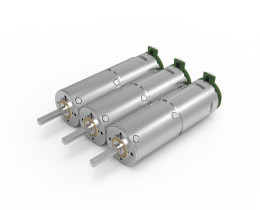Why 220V DC Gear Motors Are Quietly Changing the Game
Picture this: a machine that hums along day after day, unfazed by heavy loads or tight deadlines. No drama, no breakdowns—just steady, reliable motion. That’s the unsung hero we’re talking about today: the 220V DC gear motor. Let’s cut through the noise and explore why this piece of tech is becoming a go-to for industries that value grit over glamour.
.webp)
The “No-Nonsense” Powerhouse
Ever wonder what keeps conveyor belts running smoothly in dusty warehouses or ensures precision in automated packaging lines? Hint: it’s not magic. A 220V DC gear motor combines high torque with compact design, making it ideal for spaces where efficiency trumps everything. One user put it bluntly: “We switched last year, and downtime dropped by 40%. It just… works.” No flashy specs—just results.
Wait, why 220V?
Glad you asked. Higher voltage means less current for the same power output. Less heat, fewer energy losses, and a longer lifespan. Think of it like a marathon runner pacing themselves versus a sprinter burning out fast. For operations running 24/7, that endurance matters.
Q&A: The Stuff People Actually Care About
“Will it handle sudden load changes?”
Absolutely. The built-in gear system adjusts seamlessly, whether you’re ramping up production or dealing with unexpected resistance. One bakery owner joked, “It handles dough spikes better than my staff handles Mondays.”
“What about maintenance?”
Here’s the kicker: these motors are designed to be low-fuss. Sealed housings keep out debris, and brushless models eliminate wear-and-tear parts. As one facility manager noted, “We check it quarterly. Mostly to remind ourselves it’s still there.”
The KPOWER Edge
While we’re avoiding brand shoutouts, let’s just say one manufacturer’s approach stands out. Their motors use hardened steel gears paired with copper windings—a combo that laughs at corrosion and shrugs off voltage fluctuations. One client compared it to “that one tool in your workshop that outlasts everything else.”
Real-World Grit
Take a recycling plant in Germany. They replaced their old AC motors with 220V DC gear motors and saw a 28% drop in energy costs. Or a small textile shop in Vietnam where these motors now power looms that run 18 hours daily. The owner’s review? “Sturdy. Like it’s bored by how easy its job is.”
Wrapping It Up (Without Actually Wrapping It Up)
In a world obsessed with “next big things,” sometimes the real innovation is in refining what already works. The 220V DC gear motor isn’t here to dazzle you with jargon—it’s here to do the work. Quietly, relentlessly, and without fanfare. And in industries where reliability isn’t negotiable, that’s exactly what earns trust.
So next time you see a machine running like clockwork, there’s a good chance something like this is at its core. Not the star of the show, but the reason the show goes on.


































.webp)

